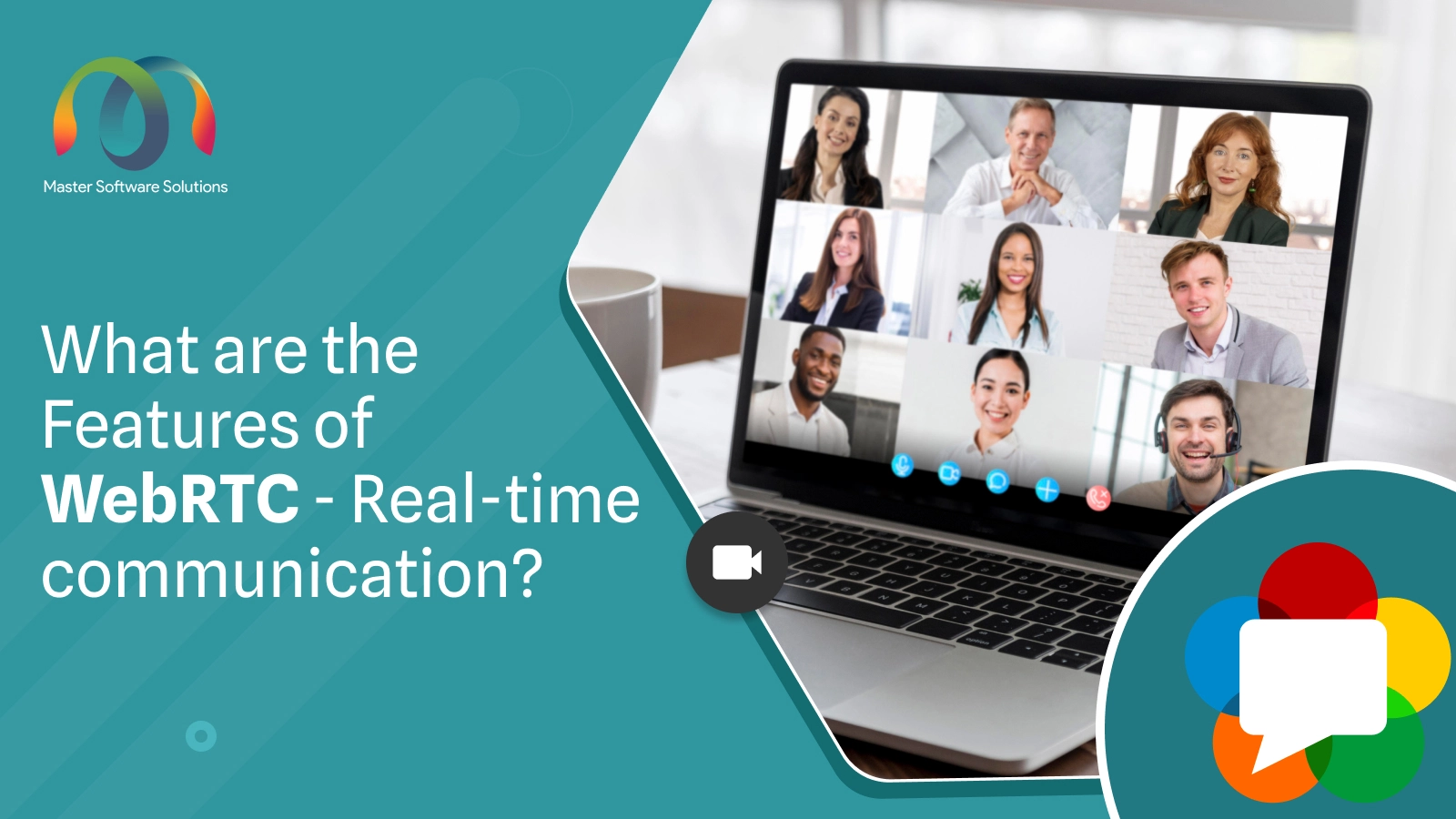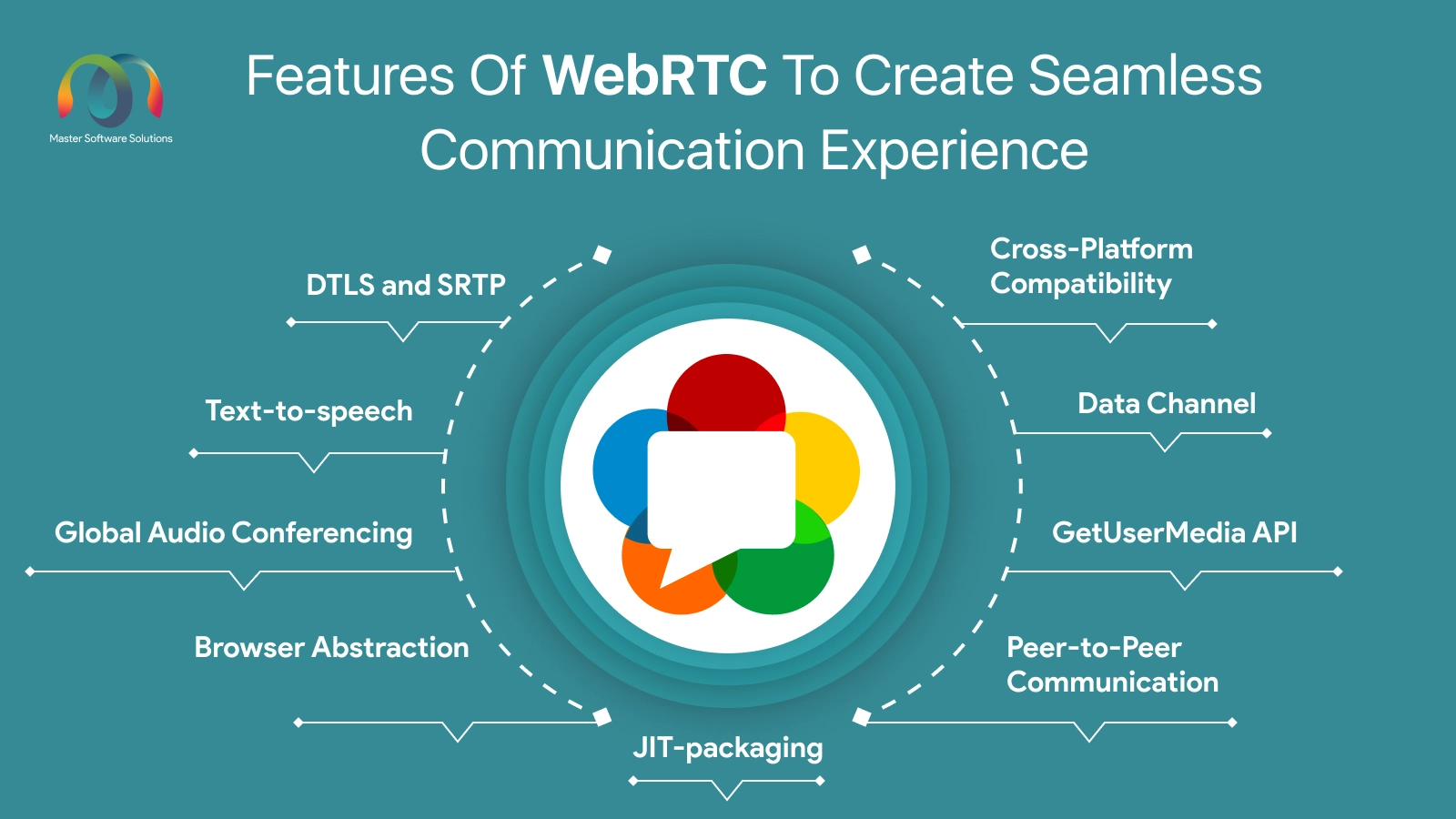What are the Features of WebRTC – Real-time Communication?

Today’s digitally connected world demands a seamless and real-time communication experience. Technology is enabling instantaneous interactions as people and businesses work to close communication gaps and foster meaningful connections. WebRTC emerges as a game-changer in the communication framework, revolutionising communication and online collaborations.
From its robust security measures to its ability to deliver high-quality audio and video, WebRTC offers features that reshape the dynamics of online interactions.
The blog discusses the features of WebRTC that help businesses create seamless and smooth communication between users.
What are the features of WebRTC?
WebRTC mobile app development offers powerful features that collectively empower developers and businesses to create powerful real-time communication applications and services, fostering seamless collaboration and enhancing user experiences in the digital realm.
Some of the features of WebRTC include:
1. Peer-to-Peer Communication
WebRTC facilitates peer-to-peer communication, allowing direct data exchange between users’ web browsers without intermediate servers. This decentralised architecture reduces latency, enhances privacy, and improves reliability, making it ideal for video conferencing, file sharing, and online gaming applications.
2. GetUserMedia API
WebRTC provides the GetUserMedia API, allowing developers to access users’ media devices, such as cameras and microphones, from web applications. This API enables real-time capture and processing of audio and video streams, empowering developers to create immersive multimedia experiences within their applications.
3. Data Channel
WebRTC includes a Data Channel API for real-time peer-to-peer data exchange between web browsers. This feature enables applications to transmit arbitrary data, such as files, messages, or game state updates, directly between users, enhancing collaboration and interactivity.
4. Cross-Platform Compatibility
WebRTC ensures cross-platform compatibility, enabling real-time communication across various devices, operating systems, and web browsers. This universality enhances accessibility and user reach, enabling seamless communication experiences regardless of the user’s device preferences.
5. DTLS and SRTP
WebRTC uses encryption to ensure secure peer-to-peer communication. DTLS (Datagram Transport Layer Security) is used to encrypt data streams sent between peers, ensuring confidentiality and integrity. SRTP (Secure Real-Time Transport Protocol) secures audio and video streams, preventing eavesdropping and tampering during transmission.
6. Text-to-speech
WebRTC converts real-time text-to-speech conversion. By enabling users to listen to written text, this feature improves accessibility and accommodates those who are blind or prefer auditory input. Apps such as chatbots for customer service, virtual assistants, and educational platforms with text-to-speech functionality.
7. Global Audio Conferencing
WebRTC enables audio conferences between users and people. By utilising WebRTC’s peer-to-peer communication features, browsers can establish audio conferences directly with each other, eliminating the requirement for centralised servers.
Global audio conferencing facilitates better communication and cooperation between participants from various geographic locations, remote workers, and distributed teams.
Read More: WebRTC Multi-platform Streaming – Build a Live Streaming App
8. Browser Abstraction
WebRTC incorporates adaptive bitrate control mechanisms, dynamically adjusting the quality of audio and video streams based on network conditions. Browser abstraction ensures optimal performance and user experience, even in fluctuating bandwidth or network congestion scenarios.
9. JIT-packaging
Depending on the communication protocol —WebRTC, RTMP (Real-Time Messaging Protocol), or HLS—WebRTC dynamically chooses the audio codecs (HTTP Live Streaming). This feature optimises audio quality and compatibility for various network environments and communication scenarios. JIT packaging improves audio communication by fluidly adjusting to changing protocol requirements and network conditions.
Examining the functionalities of WebRTC, it becomes clear that this technology is a catalyst for digital transformation and a communication tool, revolutionising how we connect, communicate, and work together in the modern world. Accept WebRTC to realise your applications’ full potential for real-time communication.
Contact us to learn more about WebRTC and how our WebRTC application development services can help your business provide seamless real-time communication.
